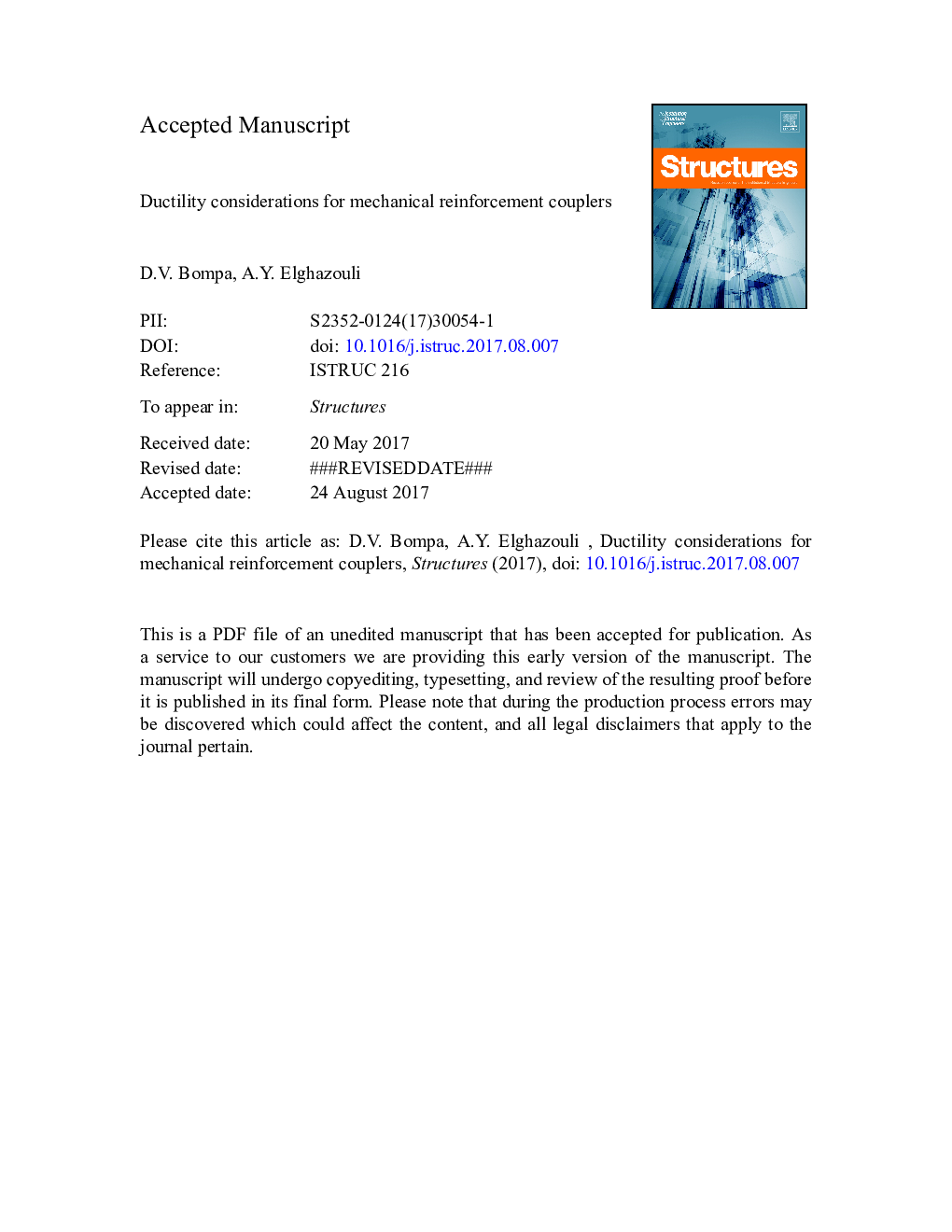| Article ID | Journal | Published Year | Pages | File Type |
|---|---|---|---|---|
| 4927852 | Structures | 2017 | 11 Pages |
Abstract
Mechanical reinforcement couplers can offer considerable constructional and economic advantages in comparison with conventional methods of lap splicing, particularly when the requirements for seismic detailing exacerbates reinforcement congestion problems. However, the lack of specific codified guidance on ductility considerations hinders the application of mechanical couplers under inelastic conditions. To this end, this brief paper provides an overview of various reinforcement coupling systems, as well as a comparative assessment of their 'in-air' and 'in-concrete' performance, based on results extracted from a collated database. The main behavioural characteristics of different coupler forms are discussed, and their key performance parameters are compared. In addition to strength and ductility, the influence of the coupler size and arrangement on the ductility of structural members is discussed. The comparative assessments presented offer some guidance for the selection and application of mechanical reinforcement couplers in inelastic regions, and highlights areas in which further detailed investigations are required.
Keywords
Related Topics
Physical Sciences and Engineering
Engineering
Civil and Structural Engineering
Authors
D.V. Bompa, A.Y. Elghazouli,
